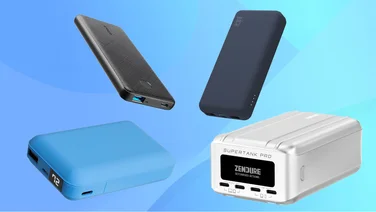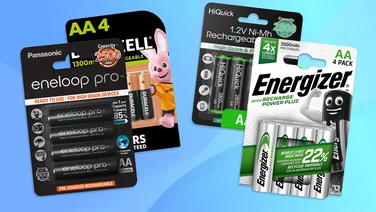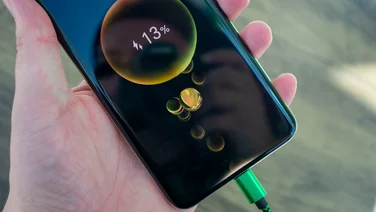To help us provide you with free impartial advice, we may earn a commission if you buy through links on our site. Learn more

Power banks have become an essential part of anyone’s out-and-about kit, but they’re particularly useful when flying. Not only are public chargers a security risk, and most outlets at airports occupied, you might also find yourself on flights that are so long that a power bank is the only way to keep your gadgets going.
The thing is, taking rechargeable batteries onto an airplane can come with complications, and if you run afoul of the regulations, that could mean legal troubles. So let’s clear the air on the most important questions readers have when it comes to flying with a power bank.
Can you take power banks on planes?
A power bank is no different from a device like a laptop or a smartphone containing a lithium battery. So yes, you can absolutely take a power bank on a flight but there are rules.
The UK Civil Aviation Authority reminds travellers that:
- Power banks (or any spare batteries) must be in a cabin bag
- You can carry two extra batteries at most
- Devices in your bag, including power banks, need to be switched off, not just in sleep mode
What capacity of power bank can I take on my flight?

Each individual airline has its own rules around electronics and batteries. They might limit the maximum battery size for example. This is why so many laptops have 99.9Wh batteries, because many airlines have a 100Wh limit. There are large power banks that exceed this number, which means some airlines will not let you board with them.
That doesn’t mean you can’t take a bigger power bank at all, but if it’s 100Wh or over, you’ll have to declare it upfront, usually during check-in, and then get permission from your airline. Since individual airlines have so much leeway to set their own rules, you shouldn’t assume that what was OK with one airline, will be fine with another. Based on the UK CAA rules, you need to seek approval from your airline if you want to take a battery greater than 100Wh (but not above 160Wh).
According to Mark Robinson, Regional Director of Product Management, EMEA at Belkin:
“There are two hard rules for power banks, and you should check the airline’s guidance on lithium-ion batteries. Always carry your power bank with you into the cabin and never put a power bank in your hold baggage. Most airlines also restrict the capacity of the power bank to below 27,000 mAh.
“In addition to those requirements, you should only take trustworthy power banks on an aircraft from a reputable brand like Belkin and from a reputable retailer, ensuring that it has all the relevant safety markings like the CE or UKCA mark.”
Why else might I not be able to take my power bank on a flight?
Apart from capacity issues, there are several other reasons that you may be denied a power bank on your flight. If the labeling on the power bank is worn off, or isn’t adequate, making it hard to confirm the capacity, then you may be asked to leave it behind.
If you have a power bank that’s damaged in some way, such a cracked casing or loose port, that may be a safety hazard. Ditto for power banks with removable batteries, since this increases the risk that something can go wrong.
Can I use my power bank to charge my Phone in-flight?

Whether you can actually use your power bank to charge other devices during your flight is another thing that will vary from one airline to the next. Singapore Airlines banned power bank use in-flight in March of 2025 and several Asian airlines are set to follow suit. This is understandable, given the role that lithium batteries have played in aeroplane fires.
Apart from an airline banning you from charging your devices with a power bank, you’ll likely also be asked not to charge your power bank while in your seat if there are outlets.
Having said that, if you are on a flight that offers USB charging, then you may as well charge your laptop or phone from there – just be sure to use a power-only cable for cybersecurity reasons.
Tips for flying with a power bank
The most important thing to do before taking a power bank on a flight is to pick the right one. We suggest you start by looking at our roundup of the best power banks, since we test the products we write about, so you know that our reviews are based on real-world use, not just on-paper specifications.
It’s not just about the power bank itself, though. You need to treat your power bank with the right level of respect, or you risk putting yourself and others in danger. We got this sage advice from Jonathan Nicholson, a representative of the UK’s CAA:
“Correct handling reduces risk. Lithium batteries should be carried in your carry-on baggage. Power banks and spare batteries should also be in a cabin bag and should be completely turned off and not in standby mode.”
Mark Robinson, regional director of product management, EMEA at Belkin also echoes a similar opinion.
“When you are on the aircraft keep the power bank safe, make sure you don’t lose it down the side of your seat where it could get damaged by the seat mechanism.”
When it comes to air travel, obviously you need to choose a power bank that conforms to the regulations we’ve mentioned and any others that are specific to an airline or are enacted in future.

However, it’s crucial to select a power bank that will both charge your devices at their maximum rate, and let itself be charged as quickly as possible. Although this puts additional wear on both the power bank and device’s battery, it also means you minimise how much time you need to actively use the power bank. It can make those periods between flights, or the minutes before you’re asked to turn it off really count.
We also think that passthrough charging is an important feature for air travellers who use power banks. This is when a power bank can charge itself while also passing power through to connected devices. Not only is this better for security – your power bank can’t be hacked by a compromised charger – it also saves you time between flights to get everything charged with limited outlets available.
Of course, the modern phones such as the Samsung Galaxy S24 Ultra and the Samsung Galaxy S25 Ultra have incredible battery stamina, so picking your next laptop or phone carefully will also help reduce the amount of time you need to spend connected to your battery pack while travelling.






